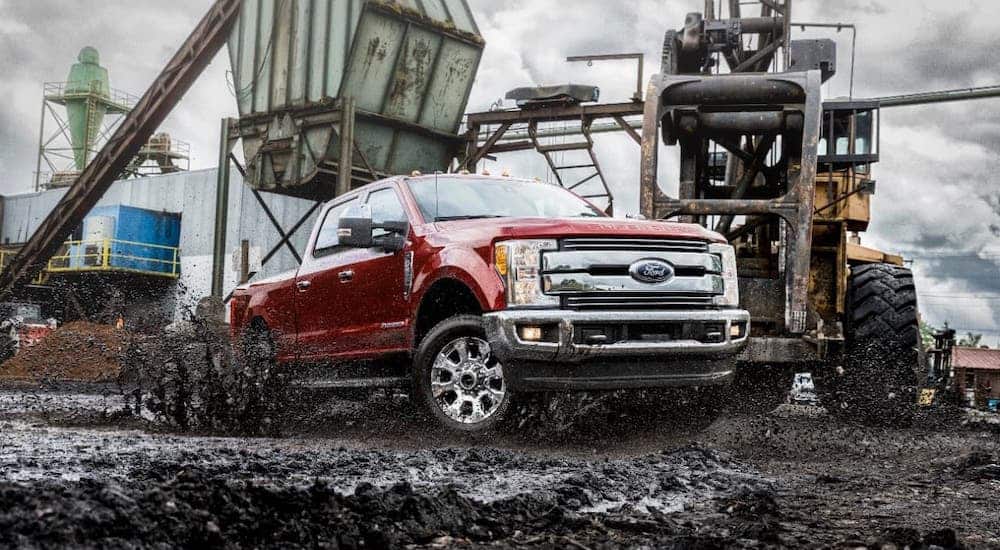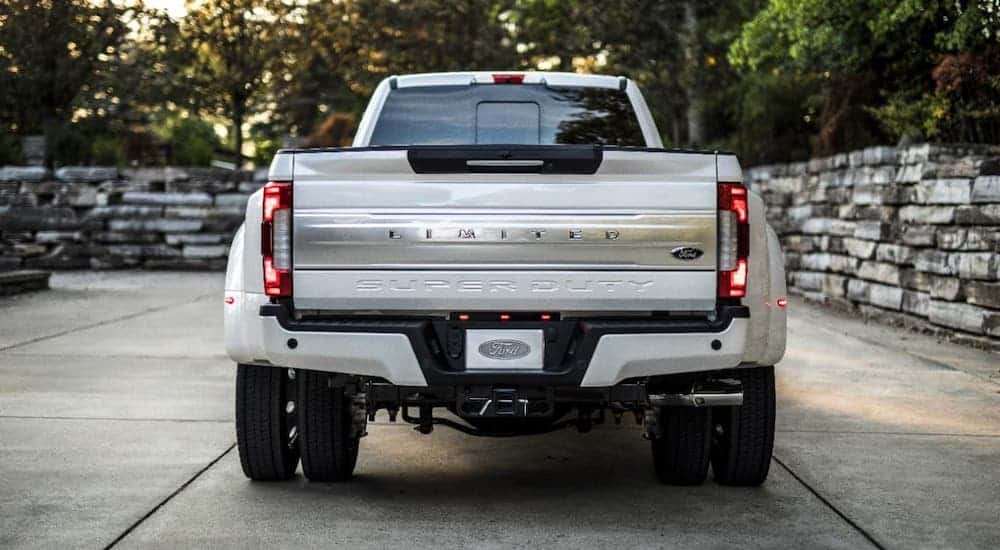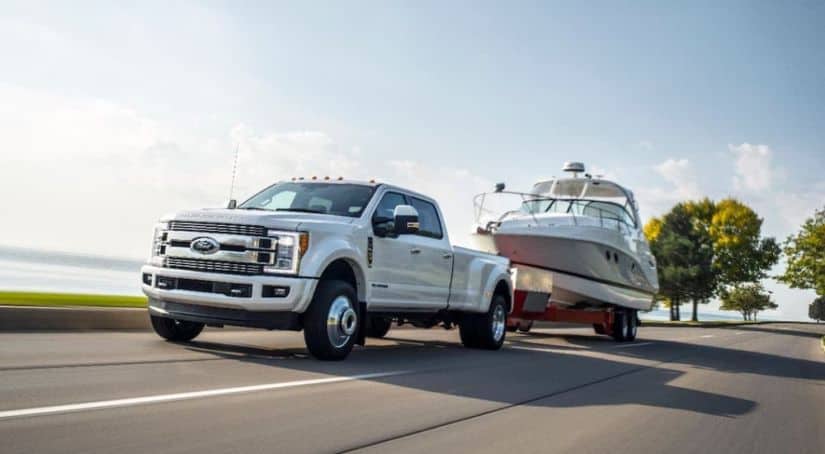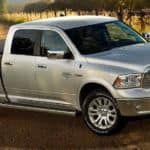Diesel engines are commonly seen on large, heavy vehicles, including busses, construction equipment, or tractor-trailers. Still, they have been seen on passenger vehicles as well, starting roughly twenty years ago. Primarily, diesel engines are seen on passenger trucks, though there are some cars on the market today that also have these engines. However, if you want the power of diesel and not just the fuel-efficiency benefits, you should be looking at used Ford diesel trucks.
Ford has been producing diesel trucks for 48 years, and their commitment to power and performance has only gotten stronger. Throughout the years, Ford has changed and developed its diesel engines to provide the most power for people who need a heavy-duty truck that gets the job done. However, Ford, like many other companies, has slowly been distributing its diesel power to light-duty vehicles for power and efficiency reasons.
Where Did Diesel Start
Diesel engines operate through a compression ignition system. They were originally used as a more efficient replacement for stationary steam engines, then made their way into more heavy vehicles. In addition to large, heavy vehicles, diesel engines are also seen on ships, submarines, and trains. Their use in passenger vehicles was a slow path to travel, as they were originally thought to only be needed for the large scale and power offered by their more popular uses. One of the most popular vehicle manufacturers to create a diesel engine and even build a line around said diesel engine was Ford.
Introducing Diesel: A Push for More Power
The first diesel engine introduced for Ford passenger cars hit the market in 1982, a 6.9-liter indirect injection engine that churned out 170 horsepower. This engine style, known as a Power Stroke diesel, turned Ford’s Super Duty line into one of the best selling in America. The first Ford diesel engine lasted six years until an improvement was introduced. This improvement came in the form of a 7.3-liter diesel engine, produced from 1988 to 1993.
The next year brought the first Power Stroke Turbo-Diesel. This engine introduced a direct injection system, an all-new turbocharger, and an air-to-air intercooler. This 7.3-liter diesel engine was an instant hit, staying relevant in manufacturing through 2003, and boasts 210 horsepower. Today, there are still over two million of these engines actively on the market – more than GMC, Chevrolet, and Dodge diesel engines combined.
The 7.3-liter diesel engine was given a revamp in 1999. The addition of an intercooler and electronic fuel pump was only the beginning. Higher injection pressure and higher boost pressure led diesel engine aficionados to claim this particular engine as one of the best on the market. It offers 235 horsepower and can last for over a quarter-million miles.

Emissions Concerns Bring Changes
The story might have ended there, leaving Ford to rest on a chain of success, but 2003 brought about more concern for the emissions being put off by diesel engines. This brought about the 6.0-liter Power Stroke. Despite its smaller size, the engine was more powerful, with 325 horsepower and 570 lb-ft of torque. This engine had its drawbacks, as the new emissions standard equipment had never been used before. Blown head gaskets were just one problem that haunted this particular engine. This was also the first engine manufactured with specific emissions standards in mind.
A 6.4-liter diesel was next to come down the line, released in 2008 in an effort to improve on the 6.0 liter and its common mechanical issues. The 6.4-liter model was no longer dependent on a hydraulic electronic injection unit. Instead, it relied on engine oil pressure for fuel injector operation. It was introduced with twin sequential turbochargers and a common rail system. All of this combined to give the 6.4-liter diesel engine a total of 350 horsepower and 650 lb-ft of torque.
The most recent diesel engine made by Ford came about in 2011. This was the first such engine launched by Ford alone, rather than through a partnership between Ford and Navistar, which all previous engines had been part of. The Ford-only launch was a 6.7-liter Power Stroke, using the same common rail injection system as the previous model. Its output tops at 390 horsepower and 735 lb-ft of torque. This engine is better known for its reliability than sheer power.
Modern Diesel Engines: What They Look Like Now
Thirteen states in the US are home to heavy-duty diesel engine manufacturing. Modern diesel engines, aided by advancements in technology, have been advanced to the point that they are almost emission-free. New diesel trucks on the road now have saved 5.8 billion gallons of fuel since 2011, and a single diesel engine can reduce the emission of nitrogen oxides by two tons per year. Another advancement that has helped reduce these emissions is diesel fuel itself. Low sulfur diesel fuel entering the market significantly reduced the emissions that many diesel engines used to put off.
Though the changes in modern diesel engines add up to drastic improvements, most of the individual changes were small. An increased compression ratio and decreased water pump speed both lend to better gas mileage, while the changes to diesel fuel helped emissions to drop. The final step in the reduction of maintenance costs rests with individual drivers, especially in the trucking sector. Enhanced engine software and the use of GPS data about road conditions can help the driver prepare ahead of time. Tools like predictive braking or gear shifting can offer better control of the vehicle, greater safety on the roads, and less wear and tear on the vehicle’s individual parts.

Why Choose Diesel?
Diesel engines are usually chosen by buyers for their fuel efficiency and can be found among all major manufacturers for passenger and commercial vehicles. Though diesel fuel can cost more upfront, the cost over a year to fill up a diesel engine can be up to 30% less than filling a gasoline engine of a similar size. This draw is one of the main reasons that diesel engines started becoming more popular on passenger vehicles once the option was available.
Another large draw in favor of diesel is the maintenance needs of a diesel engine. With no need for distributors or spark plugs, there is no requirement for ignition tune-ups. Instead, diesel engines come with water-separator collection bins that must be emptied manually by the owner. Diesel engines also require mechanics with specialized knowledge, which can add to the cost of repairs when any are needed.
Diesel engines also have more power than the majority of gasoline engines. High torque and low horsepower overall ensures a vehicle that can accelerate faster from a complete stop when compared to a gasoline engine. Vehicles with diesel engines also have higher towing capabilities but less speed. Though it takes time for a diesel engine to get moving, it is likely to last longer and be more reliable than many gasoline-fueled counterparts.
Invest in Diesel
A diesel engine, whether in a new or used vehicle, can become a classic that any car buyer will be glad to return to again and again. Diesel engines are known for their resilience and longevity, so investing in a used Ford diesel truck will ensure you have a reliable truck that lasts. Power and performance come standard when you choose diesel, and with a long history to back it up, you won’t get a better diesel truck than a Ford.



